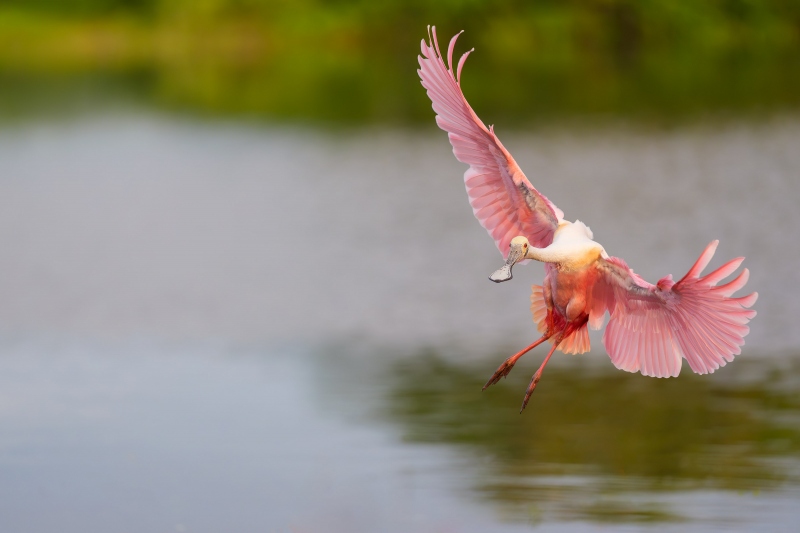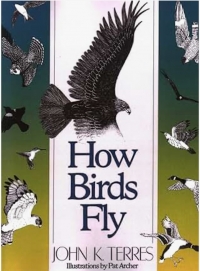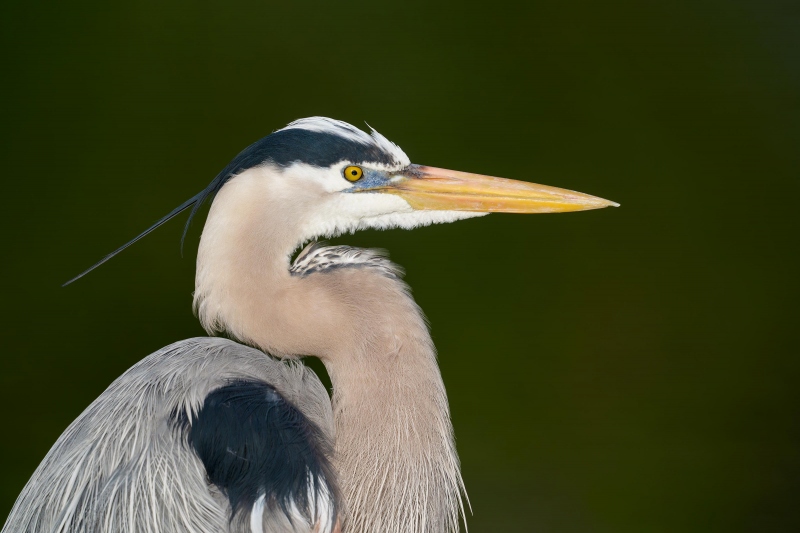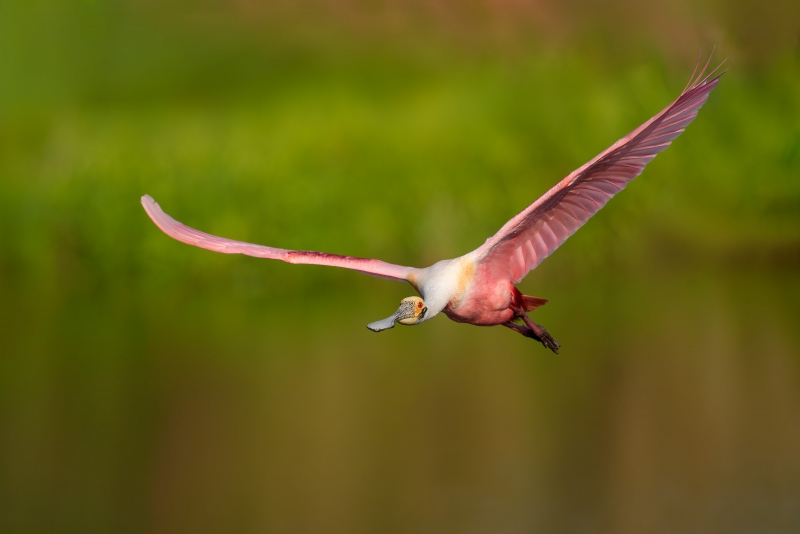Note
This blog post took 4 1/2 hours to create.
I Did Not Want to Like the Sony a9 iii Mirrorless Body …
Based on what I had heard about the Sony a9 iii, and having been absolutely in love with the Sony a-1 for several years, I really did not want to like the Sony a9 iii. I figured that the 24.6-megapixel a9 iii raw files would pale when compared to the superb 50.1 MP raw files of the a-1. I was sure that file size would be the deal breaker.
In truth, the a9 iii files are superb with lots of fine detail. And I love the colors of the a9 iii images. Using my new workflow as detailed in the Digital Basics III Video Series, the optimized images look great. I am 100% positive that they will pass muster when I begin submitting my a9 iii images to Getty.
While I have been thrilled by the a-1’s 30 fps frame rate, 120 fps opens up a whole new world for flight photographers. Be sure to check out the video below to see what I am talking about. I cannot wait to work with the a9 iii and my 600mm f/4 GM lens!
Yikes! I almost forgot to mention that if you use one of my affiliate links to purchase your a9 iii, you are invited to shoot me your receipt via e-mail. After it checks out, I will send you my a9 iii CAMSET.DAT file, instructions on how to load that to your a9 iii, a complete Buttons and Dials guide, and additional brief comments. Lucky you!
What’s Up?
I got my hands on an a9 iii in Homer and set it up as best as I could in a short time. With the weather looking good for Friday morning, we woke early and headed to Stick Marsh. With Jim driving, I had an a-1 and the a9 iii on my lap. As I went over every menu item on the a9 iii, I realized that I had been mistaken. The menus on the two bodies were in fact quite similar, if not identical (but for the new stuff on the a9 iii). By the time we got to the recreation area, I pretty much had the camera figured out. I did not, however, learn how to close the shutter curtain with power off until after we got home.
I was in position by 6:45am and began creating images. The morning was quite overcast and the sun did not break through completely until just after 8:00am. There was a fair amount of action and though I was shooting more aggressively than I usually do, I was quite surprised when I filled a Delkin 160GB CF-Express A card early on. With pre-capture set to one full second and the frame rate maxed out at 120fps, you will fill cards quickly.
I created 9046 images without hardly realizing it. I peeked at the images briefly and chose a few to optimize. The formal edit using Photo Mechanic took 20 minutes on the clock. Photo Mechanic will become more valuable as frame rates continue to increase. As Camera Bits recently ended their affiliate program, I will be offering a Photo Mechanic Getting Started Guide asap. It will cost $25.00. If you are new to Photo Mechanic, you will surely want a copy of the guide so that you can get off to a perfect start.
I kept 200 images but 152 of those were kept to create the movie-like spoonbill in flight video below. That left me with 48 keepers on what was a mostly dreary morning. I will keep a handful of the 152 after I create the movie. So let’s say I wind up with as most 55 keepers. The leaves me with a keeper rate of .006% — less than one percent.
Why so low? The light was lousy for most of the morning. I was shooting aggressively so that I could see lots of raw files and learn about the AF system. And every time that you start a new series, the camera will save 120 pre-capture images! In any case, I found culling the images in Photo Mechanic easy as the family jewels literally jump off the screen.
Today is Saturday 8 March 2024. I was hoping to head down to the lake this morning but it was dark and drizzly so I opted to stay in and finish today’s blog post on the Sony a9 iii. That done, I am headed down to the lake for a (shirtless) 1.5 mile Vitamin D walk.
I learned minutes ago that multiple IPT veteran Brian Bowers is signing up for Homer #2. And it looks as if many multiple IPT veteran Vasili Chernishof will be re-upping for both 2025 Homer IPTs. If that works out, there will soon be only a single opening left for the first IPT. I was glad to learn that Ralph Fletcher’s Canon EF 600mm f4/L IS II lens in excellent condition sold for the asking price of $4,999.00 just minutes after it was listed in the last blog post.
Wherever you are and whatever you are doing, I hope that you are also having a great day.
Please remember to use the B&H links that are found on most blog pages and to use the BIRDSASART discount code at checkout when purchasing your new gear from Bedfords to get 3% back on your credit card and enjoy free second-day air FedEx. Please, also, consider joining a BAA IPT. You will be amazed at how much you will learn!
If an item — a Delkin flash card, or a tripod head — for example, that is available from B&H and/or Bedfords, is also available in the BAA Online Store, it would be great, and greatly appreciated, if you would opt to purchase from us. We will match any price. Please remember also to use my B&H affiliate links or to earn 3% cash back at Bedfords by using the BIRDSASART discount code at checkout for your major gear purchases. Doing either often earns you free guides and/or discounts. And always earns my great appreciation.
|
|
|
This image was created at Stick Marsh on 8 March 2024. I used the handheld Sony FE 300mm f/2.8 GM OSS Lens (Sony E) and the ridiculously amazing Sony a9 III Mirrorless Camera. The exposure was determined via Zebra technology with ISO on the Thumb Dial. ISO 2000: 1/3200 sec. at f/2.8 (wide open) in Manual mode. When evaluated in RawDigger, the raw file brightness was determined to be 1/2 stop short of dead-solid perfect. AWB at 7:05:42am on heavily overcast morning. Tracking: Zone/AF-C with Bird Face/Eye detection enabled performed to perfection. Be sure to click on the image to enjoy a high-res version. Image #1: Roseate Spoonbill in flight braking to land |
300mm f/2.8 GM Lens/a9 iii
When I first visited Stick Marsh several years ago, I realized instantly that Sony needed to make a lightweight 300mm f/2.8 lens. Yesterday with the 300mm f/2.8, I was able to sit farther back than I used to when using the Sony FE 70-200mm f/2.8 GM OSS II lens with the 1.4X TC. Not to mention that I gained one full stop of ISO by being able to work at f/2.8 rather than f/4.
As it turned out, I was correct. Of the many thousands of images that found their way into the trash, most of them were razor sharp, well-framed images of spoonbills in flight. I kept only those with family jewels potential. In short, the Sony FE 300mm f/2.8 GM OSS Lens (Sony E) is the perfect lens for Stick Marsh. And for Homers eagles as well.
The First Ever BIRDS AS ART Lens Guide
Impressed by my Sony 300mm f/2.8 images? Use either my Bedfords or B&H affiliate link to purchase your Sony 300mm f/2.8 GM lens and shoot me your receipt via e-mail and request a copy of the first-ever BAA Lens Guide. It will be published sometime in late March as I have a lot more to learn about this amazing new lens.
How Birds Fly by John K. Torres
I met and interviewed John Kenneth Terres several decades ago for a Bird Watchers’ Digest article. He gifted me a signed copy of “How Birds Fly.” Several months ago, when I could not find it, I ordered a copy from Amazon and was totally blown away. While viewing my a9 iii images rapid fire yesterday in Photo Mechanic, I felt as Terres must have felt when he finally saw some slow motion movies of birds in flight. The experience was incredible. Click on the logo link above to order your copy. If you love flight photography, you owe it to yourself.
Roseate Spoonbill Movies
Watch the two flight movies; you will be amazed and delighted.
|
|
|
This image was also created at Stick Marsh on 8 March 2024. I used the handheld Sony FE 300mm f/2.8 GM OSS Lens (Sony E) with the Sony FE 2x Teleconverter and the ridiculously amazing Sony a9 III Mirrorless Camera. The exposure was determined via Zebra technology with ISO on the Thumb Dial. ISO 800: 1/3200 sec. at f/5.6 (wide open) in Manual mode. When evaluated in RawDigger, the raw file brightness was determined to be dead-solid perfect (ho hum). AWB at 8:03:44am on then mostly sunny morning. Tracking: Expand Spot/AF-C with Bird Face/Eye detection enabled performed to perfection. Be sure to click on the image to enjoy a high-res version. Image #2: Great Blue Heron head portrait |
When the Sun Finally Came Out
When the sun finally came out yesterday, I added the 2X TC to the 300mm f/2.8 GM lens and went to work. I was thrilled to see the super sharp results. Handholding at 600mm is simply a joy. Good bye tripods. Unless and until I need 840 or 1200mm.
|
|
|
This image was also created at Stick Marsh on 8 March 2024. I used the handheld Sony FE 300mm f/2.8 GM OSS Lens (Sony E) with the Sony FE 2x Teleconverter and the ridiculously amazing Sony a9 III Mirrorless Camera. The exposure was determined via Zebra technology with ISO on the Thumb Dial. ISO 640: 1/4000 sec. at f/5.6 (wide open) in Manual mode. When evaluated in RawDigger, the raw file brightness was determined to be dead-solid perfect (ho hum). AWB at 8:16:51am on then mostly sunny morning. Zone/AF-C with Bird Face/Eye detection enabled performed to perfection. Be sure to click on the image to enjoy a high-res version. Image #3: Roseate Spoonbill in flight |
Lightweight Handheld 600mm Flight Photography
This image thrilled me even more than Image #2 did. Handholding the 300mm f/2.8/2X III combo is a dream. I can do it all day long in part because of its small size. I am not sure if the a-1 will do as well with flight with the 300mm f/2.8/2X III combo.
Do Understand
Do understand that purchasing the latest greatest camera gear will not make you a better bird photographer. You need to study and practice. And look at as many great images as possible. Period. There are hundreds if not thousands of folks with $5,000.00 or $10,000 or even $30,000 or more worth more of great gear who simply do not have a clue as to how to make a good photograph. How do I know this? I see them every day at great shooting locations around the world.
What is the solution? Join me somewhere on a BAA Instructional Photo-Tour. I will not be doing them forever …
Typos
With all blog posts, feel free to e-mail or to leave a comment regarding any typos or errors.


















Enjoyed chatting with you at Stick Marsh.
Best Wishes.
That is so friggin cool! The leading edge feathers “stalling” and the crossed wing tips! Amazing!!!
Patrick
Agree. We missed again in San Diego!
with love, a
hi Artie,
it’s 2024….who knew?
I’m sure you are excited with your new lens and body.
love, Mike
Obviously, not me. I went out on Saturday afternoon and learned something really important about the a9 iii 🙂
with love, artie
Hi, Artie. Great video and still images. I am still learning to deal with 15 frames a second; 120 fps is high-quality video! Let me endorse one thing you said and question another. I endorse your recommendation to join you on an IPT. As I’ve told you, I have learned a great deal on each IPT I’ve been on. Even though I had learned some of those things previously, I needed to learn them again, and to learn the new things. And I had a wonderful time. The thing I question is that the latest greatest camera gear will not make one a better bird photographer. It won’t teach you about composition, exposure, understanding environmental conditions and bird behavior, and so on, and if you don’t understand those, you won’t make many good images. But if you learn to use it properly it will help you take better photographs. Even my Canon R7 with the Canon RF 100-400 f/5.6-8 lens produced better images on your recent Homer II IPT than I ever could have got with my previous equipment, and my keeper rate was way higher than before. I can do things with the new equipment that I just couldn’t do before, and in some cases it frees to think about framing and exposure in ways I never could before. With love, David
Thanks, David. Thanks for the kind IPT words.
You wrote this:
“The thing I question is that the latest greatest camera gear will not make one a better bird photographer.”
This is what I wrote above:
Do Understand
Do understand that purchasing the latest greatest camera gear will not make you a better bird photographer. You need to study and practice. And look at as many great images as possible. Period. There are hundreds if not thousands of folks with $5,000.00 or $10,000 or even $30,000 or more worth more of great gear who simply do not have a clue as to how to make a good photograph. How do I know this? I see them every day at great shooting locations around the world.
What you wrote does not make a lot of sense to me as we are saying the same thing.
That said, competent folks can often use the latest createst gear to improve.
with love, artie
I think you’re talking about 2024
Thanks and fixed.
a